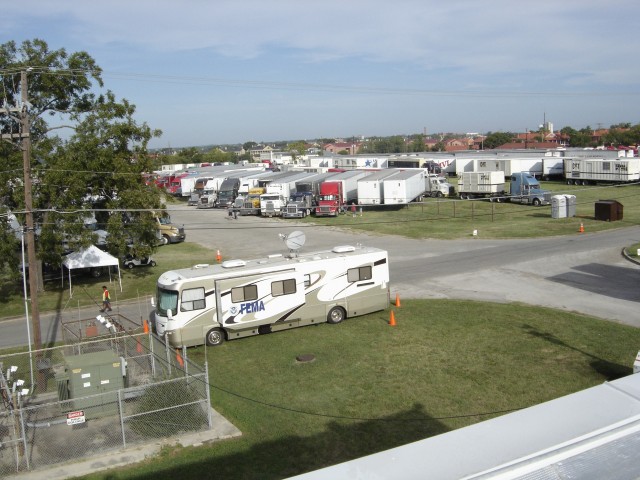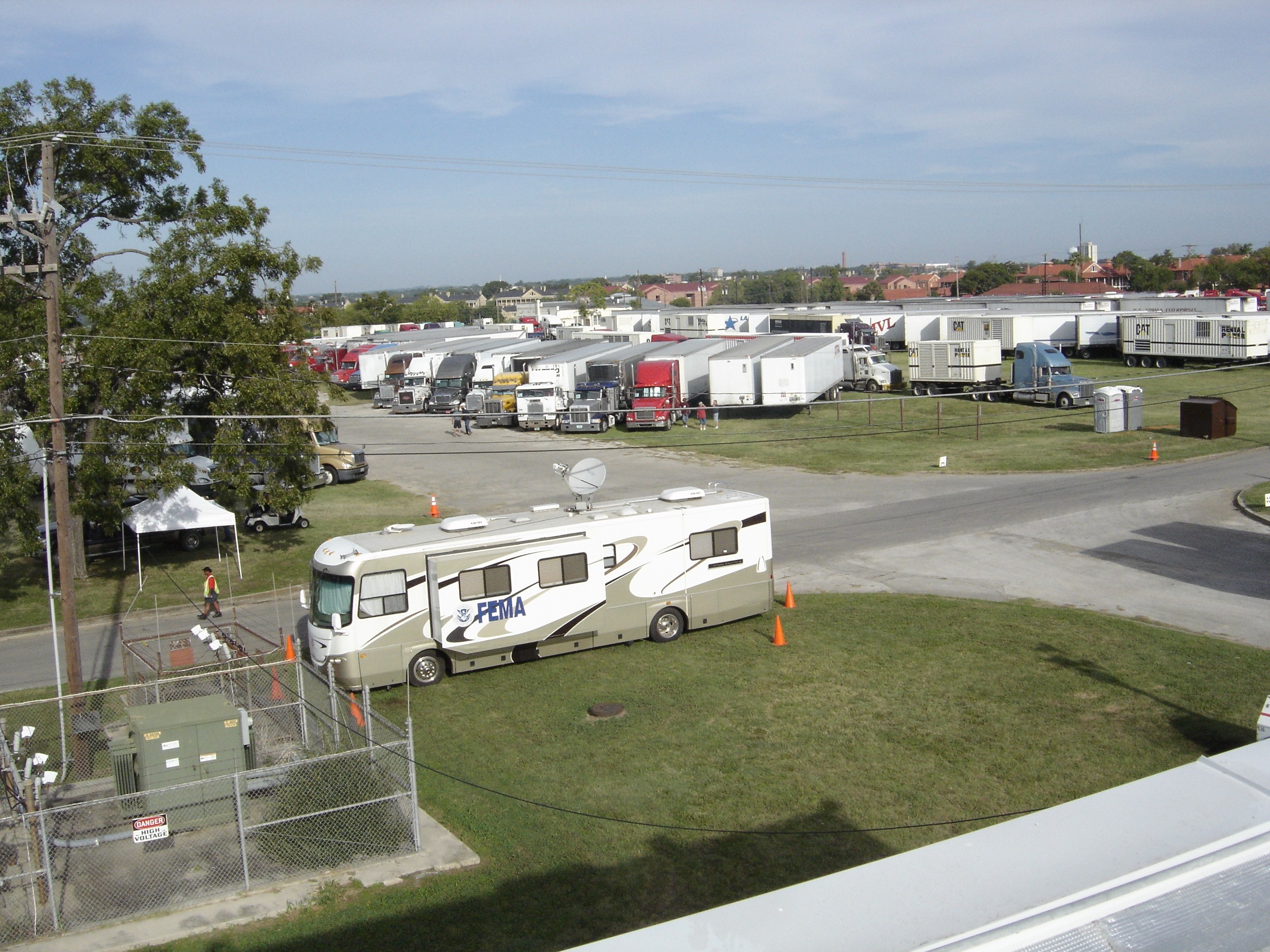
FORT SAM HOUSTON, Texas --- By the time Hurricane Ike hit the Texas coast Sept. 12, the Fort Sam Houston Garrison and the Federal Emergency Management Agency had already turned the post into a major distribution point for supplies and personnel for disaster relief operations.
As a FEMA national logistical staging area, about 800 people and almost 600 vehicles, mostly 18-wheelers loaded with food, water and generators, parked in formation near the Directorate of Plans, Training, Mobilization and Security building.
Once FEMA gave the word they headed out toward coastal areas.
"This is a full-court press to support FEMA from a garrison perspective," said Dale Roth, director of DPTMS. "We receive, stage and assist with the onward movement of this body of support."
Not only were there supplies, but FEMA Mobile Emergency Response Support crews were here. The MERS go into devastated areas and set up command and control facilities, Roth said.
Semi tractor-trailers, recreational vehicles and sport utility vehicles began arriving on post Sept. 10, said Mark Magalski, watch chief of the Fort Sam Houston Installation Operations Center. This was in the midst of the installation's preparations for a Tim McGraw concert scheduled for the next day.
"When we got the (FEMA) notice we were right in the middle of planning for 25,000 folks for the concert so we kind of had to do simultaneous operations and divide our attention," Magalski said.
DPTMS had also been preparing for a weeklong postwide force protection exercise, which was scheduled to begin Monday. A Naval exercise was also planned for the weekend at Camp Bullis. Both exercises were postponed because of the hurricane. Another concern was the weekend weather forecast for San Antonio.
"Initial weather indications were that we were going to receive category 1 hurricane force winds," Magalski said.
All these scenarios kept the watch standers, emergency preparedness personnel and first responders at DPTMS very busy, Magalski said.
The stores in the staging area included 2.7 million meals-ready-to-eat, 3.6 million liters of water, 900 tons of ice and 15 fuel trucks.
As relief operations began, FEMA dispatched vehicles to Beaumont, Texas, and moved others to an auxiliary airfield at Randolph Air Force Base, where they would be directed to other areas, Roth said.
All the garrison's directorates were involved in the staging operations, Roth said. The Directorate of Emergency Services provided security for the staging area. The Directorate of Public Works provided logistical support, including trash receptacles, Roth said. The Directorate of Logistics provided, among other things, fuel for the trucks. The Directorate of Information Management provided secure Internet access. The Directorate of Family and Morale, Welfare and Recreation provided golf carts for the FEMA officials and use of showers 24/7 at the Jimmy Brought Fitness Center.
"It was a team effort," said Sam Shattuck, chief of the Plans and Operations Division at DPTMS. "I was most impressed with the support from the Garrison. If we needed something, they responded right away."
Since the 2005 hurricane season, FEMA has used Fort Sam Houston as a staging site.
"We've covered Emily, Rita and Katrina," Roth said.
DPTMS officials agreed that the staging operated efficiently.
"I think it went extremely well," said Magalski, a logistician. "Everything went smoothly; the mission was accomplished with no injuries or significant glitches."

Social Sharing